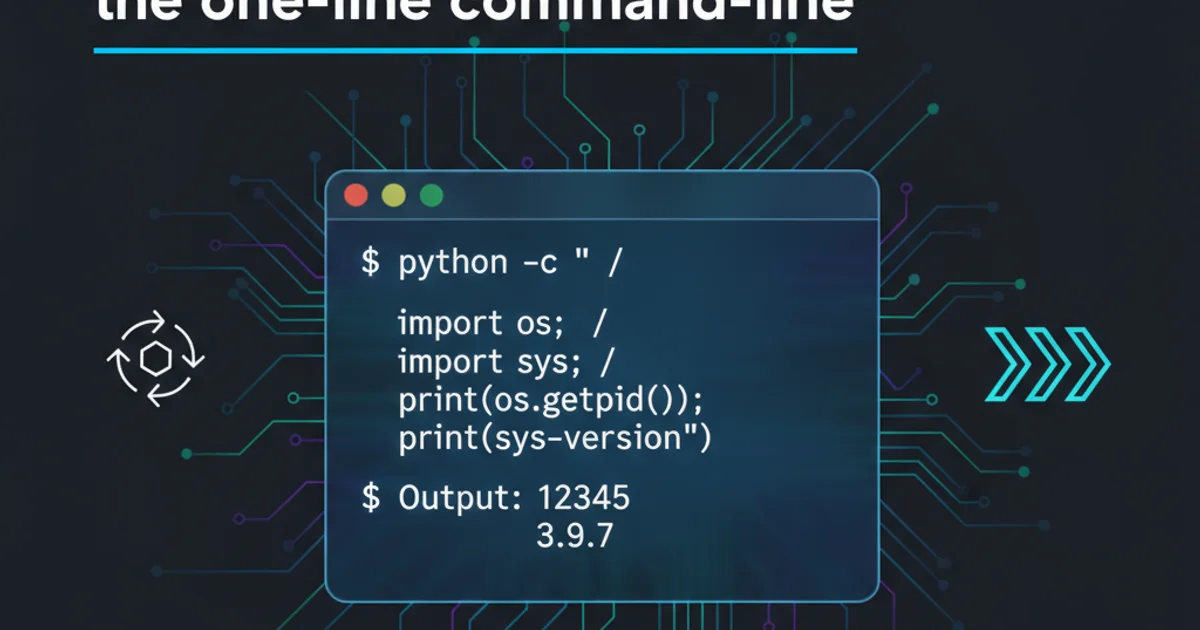Executing multi-line statements in the one-line command-line
Categories:
Mastering Multi-Line Statements in Your Command Line

Learn how to execute complex, multi-line commands and scripts directly from your shell's one-line prompt, enhancing productivity and scripting capabilities.
Working in the command line often involves executing simple, single-line commands. However, many tasks, especially in scripting languages like Python or complex shell operations, require multiple lines of code. This article explores various techniques to input and execute multi-line statements directly within your shell's one-line prompt, saving you from creating temporary script files for every small task.
Understanding Shell Line Continuation
Most modern shells (Bash, Zsh, PowerShell) offer mechanisms to indicate that a command continues on the next line. The most common method is using the backslash (\) character at the end of a line. When the shell encounters a backslash, it interprets the newline character immediately following it as a space or continuation, allowing you to type the rest of your command on the next line without executing the current one.
echo "This is a very long command that I want to break up \
> into multiple lines for readability and organization." \
> "It will still execute as a single command."
Using backslash for shell line continuation
Executing Multi-Line Python Code
Python is a prime example where multi-line statements are common. While you can always save a .py file and run it, for quick tests or one-off executions, entering multi-line Python directly into the shell is incredibly useful. This can be achieved using the python -c command or by leveraging the shell's ability to pass a string to standard input.
flowchart TD
A[Start] --> B{"Need Multi-Line Python?"}
B -->|Yes| C{Choose Method}
C --> D["python -c 'code; more code'"]
C --> E["python <<< $'code\nmore code'"]
D --> F[Execute]
E --> F[Execute]
F --> G[End]
B -->|No| GDecision flow for executing multi-line Python
Using python -c
python -c " import os print(os.getcwd()) for i in range(3): print(f'Iteration {i}') "
Using heredoc (Bash/Zsh)
python <<EOF import sys print(f'Python version: {sys.version.split()[0]}') EOF
Using echo and pipe
echo "import math\nprint(math.pi)" | python
Advanced Shell Scripting with Multi-Line Commands
Beyond simple continuations, shells offer more robust ways to handle multi-line input, especially for complex scripts or functions. Heredocs (<<EOF) are particularly powerful for embedding blocks of text or code directly into a script or command, which can then be piped to another program or executed by the shell itself.
cat << 'EOT'
This is a multi-line
text block that will be
printed exactly as is.
Variables like $USER will not be expanded here.
EOT
Using a 'quoted' heredoc to prevent variable expansion
EOF) is quoted (e.g., <<'EOF'), variable expansion and command substitution within the heredoc content will be disabled. This is useful for passing literal strings.1. Start a multi-line command
For shell commands, end the first line with a backslash (\). For Python, use python -c "..." or a heredoc.
2. Continue on subsequent lines
The shell will typically provide a secondary prompt (e.g., > or ...) indicating it's awaiting more input. Type your additional lines of code or command.
3. Terminate the multi-line input
For backslash continuations, simply press Enter on the last line without a backslash. For python -c, close the string with a double quote. For heredocs, type the delimiter (e.g., EOF) on a new line by itself.
4. Execute the command
Once terminated correctly, the shell will execute the entire multi-line input as a single command or script.